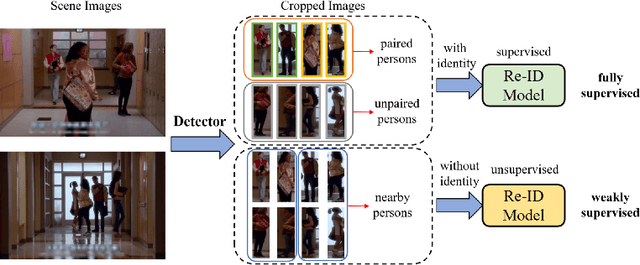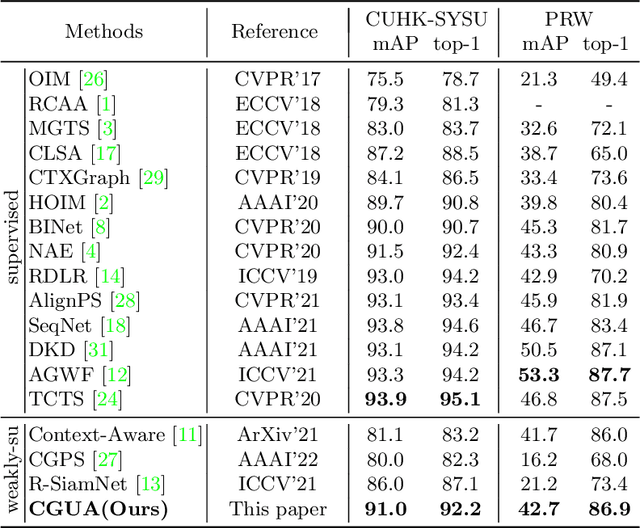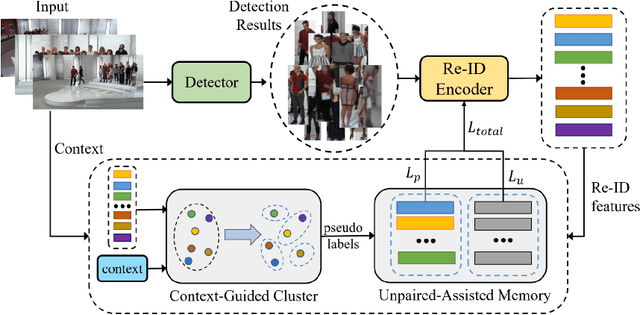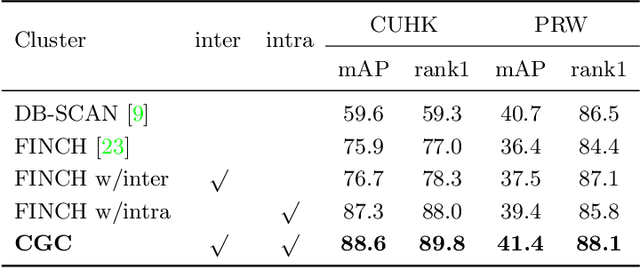Caixia Yan
SpotActor: Training-Free Layout-Controlled Consistent Image Generation
Sep 07, 2024



Abstract:Text-to-image diffusion models significantly enhance the efficiency of artistic creation with high-fidelity image generation. However, in typical application scenarios like comic book production, they can neither place each subject into its expected spot nor maintain the consistent appearance of each subject across images. For these issues, we pioneer a novel task, Layout-to-Consistent-Image (L2CI) generation, which produces consistent and compositional images in accordance with the given layout conditions and text prompts. To accomplish this challenging task, we present a new formalization of dual energy guidance with optimization in a dual semantic-latent space and thus propose a training-free pipeline, SpotActor, which features a layout-conditioned backward update stage and a consistent forward sampling stage. In the backward stage, we innovate a nuanced layout energy function to mimic the attention activations with a sigmoid-like objective. While in the forward stage, we design Regional Interconnection Self-Attention (RISA) and Semantic Fusion Cross-Attention (SFCA) mechanisms that allow mutual interactions across images. To evaluate the performance, we present ActorBench, a specified benchmark with hundreds of reasonable prompt-box pairs stemming from object detection datasets. Comprehensive experiments are conducted to demonstrate the effectiveness of our method. The results prove that SpotActor fulfills the expectations of this task and showcases the potential for practical applications with superior layout alignment, subject consistency, prompt conformity and background diversity.
OneActor: Consistent Character Generation via Cluster-Conditioned Guidance
Apr 16, 2024



Abstract:Text-to-image diffusion models benefit artists with high-quality image generation. Yet its stochastic nature prevent artists from creating consistent images of the same character. Existing methods try to tackle this challenge and generate consistent content in various ways. However, they either depend on external data or require expensive tuning of the diffusion model. For this issue, we argue that a lightweight but intricate guidance is enough to function. Aiming at this, we lead the way to formalize the objective of consistent generation, derive a clustering-based score function and propose a novel paradigm, OneActor. We design a cluster-conditioned model which incorporates posterior samples to guide the denoising trajectories towards the target cluster. To overcome the overfitting challenge shared by one-shot tuning pipelines, we devise auxiliary components to simultaneously augment the tuning and regulate the inference. This technique is later verified to significantly enhance the content diversity of generated images. Comprehensive experiments show that our method outperforms a variety of baselines with satisfactory character consistency, superior prompt conformity as well as high image quality. And our method is at least 4 times faster than tuning-based baselines. Furthermore, to our best knowledge, we first prove that the semantic space has the same interpolation property as the latent space dose. This property can serve as another promising tool for fine generation control.
Tile Classification Based Viewport Prediction with Multi-modal Fusion Transformer
Sep 28, 2023Abstract:Viewport prediction is a crucial aspect of tile-based 360 video streaming system. However, existing trajectory based methods lack of robustness, also oversimplify the process of information construction and fusion between different modality inputs, leading to the error accumulation problem. In this paper, we propose a tile classification based viewport prediction method with Multi-modal Fusion Transformer, namely MFTR. Specifically, MFTR utilizes transformer-based networks to extract the long-range dependencies within each modality, then mine intra- and inter-modality relations to capture the combined impact of user historical inputs and video contents on future viewport selection. In addition, MFTR categorizes future tiles into two categories: user interested or not, and selects future viewport as the region that contains most user interested tiles. Comparing with predicting head trajectories, choosing future viewport based on tile's binary classification results exhibits better robustness and interpretability. To evaluate our proposed MFTR, we conduct extensive experiments on two widely used PVS-HM and Xu-Gaze dataset. MFTR shows superior performance over state-of-the-art methods in terms of average prediction accuracy and overlap ratio, also presents competitive computation efficiency.
Disentangled Generation with Information Bottleneck for Few-Shot Learning
Nov 29, 2022



Abstract:Few-shot learning (FSL), which aims to classify unseen classes with few samples, is challenging due to data scarcity. Although various generative methods have been explored for FSL, the entangled generation process of these methods exacerbates the distribution shift in FSL, thus greatly limiting the quality of generated samples. To these challenges, we propose a novel Information Bottleneck (IB) based Disentangled Generation Framework for FSL, termed as DisGenIB, that can simultaneously guarantee the discrimination and diversity of generated samples. Specifically, we formulate a novel framework with information bottleneck that applies for both disentangled representation learning and sample generation. Different from existing IB-based methods that can hardly exploit priors, we demonstrate our DisGenIB can effectively utilize priors to further facilitate disentanglement. We further prove in theory that some previous generative and disentanglement methods are special cases of our DisGenIB, which demonstrates the generality of the proposed DisGenIB. Extensive experiments on challenging FSL benchmarks confirm the effectiveness and superiority of DisGenIB, together with the validity of our theoretical analyses. Our codes will be open-source upon acceptance.
Power Efficient Video Super-Resolution on Mobile NPUs with Deep Learning, Mobile AI & AIM 2022 challenge: Report
Nov 07, 2022



Abstract:Video super-resolution is one of the most popular tasks on mobile devices, being widely used for an automatic improvement of low-bitrate and low-resolution video streams. While numerous solutions have been proposed for this problem, they are usually quite computationally demanding, demonstrating low FPS rates and power efficiency on mobile devices. In this Mobile AI challenge, we address this problem and propose the participants to design an end-to-end real-time video super-resolution solution for mobile NPUs optimized for low energy consumption. The participants were provided with the REDS training dataset containing video sequences for a 4X video upscaling task. The runtime and power efficiency of all models was evaluated on the powerful MediaTek Dimensity 9000 platform with a dedicated AI processing unit capable of accelerating floating-point and quantized neural networks. All proposed solutions are fully compatible with the above NPU, demonstrating an up to 500 FPS rate and 0.2 [Watt / 30 FPS] power consumption. A detailed description of all models developed in the challenge is provided in this paper.
CGUA: Context-Guided and Unpaired-Assisted Weakly Supervised Person Search
Mar 27, 2022



Abstract:Recently, weakly supervised person search is proposed to discard human-annotated identities and train the model with only bounding box annotations. A natural way to solve this problem is to separate it into detection and unsupervised re-identification (Re-ID) steps. However, in this way, two important clues in unconstrained scene images are ignored. On the one hand, existing unsupervised Re-ID models only leverage cropped images from scene images but ignore its rich context information. On the other hand, there are numerous unpaired persons in real-world scene images. Directly dealing with them as independent identities leads to the long-tail effect, while completely discarding them can result in serious information loss. In light of these challenges, we introduce a Context-Guided and Unpaired-Assisted (CGUA) weakly supervised person search framework. Specifically, we propose a novel Context-Guided Cluster (CGC) algorithm to leverage context information in the clustering process and an Unpaired-Assisted Memory (UAM) unit to distinguish unpaired and paired persons by pushing them away. Extensive experiments demonstrate that the proposed approach can surpass the state-of-the-art weakly supervised methods by a large margin (more than 5% mAP on CUHK-SYSU). Moreover, our method achieves comparable or better performance to the state-of-the-art supervised methods by leveraging more diverse unlabeled data. Codes and models will be released soon.
Semantics-Guided Contrastive Network for Zero-Shot Object detection
Sep 04, 2021



Abstract:Zero-shot object detection (ZSD), the task that extends conventional detection models to detecting objects from unseen categories, has emerged as a new challenge in computer vision. Most existing approaches tackle the ZSD task with a strict mapping-transfer strategy, which may lead to suboptimal ZSD results: 1) the learning process of those models ignores the available unseen class information, and thus can be easily biased towards the seen categories; 2) the original visual feature space is not well-structured and lack of discriminative information. To address these issues, we develop a novel Semantics-Guided Contrastive Network for ZSD, named ContrastZSD, a detection framework that first brings contrastive learning mechanism into the realm of zero-shot detection. Particularly, ContrastZSD incorporates two semantics-guided contrastive learning subnets that contrast between region-category and region-region pairs respectively. The pairwise contrastive tasks take advantage of additional supervision signals derived from both ground truth label and pre-defined class similarity distribution. Under the guidance of those explicit semantic supervision, the model can learn more knowledge about unseen categories to avoid the bias problem to seen concepts, while optimizing the data structure of visual features to be more discriminative for better visual-semantic alignment. Extensive experiments are conducted on two popular benchmarks for ZSD, i.e., PASCAL VOC and MS COCO. Results show that our method outperforms the previous state-of-the-art on both ZSD and generalized ZSD tasks.
Self-Weighted Robust LDA for Multiclass Classification with Edge Classes
Sep 24, 2020



Abstract:Linear discriminant analysis (LDA) is a popular technique to learn the most discriminative features for multi-class classification. A vast majority of existing LDA algorithms are prone to be dominated by the class with very large deviation from the others, i.e., edge class, which occurs frequently in multi-class classification. First, the existence of edge classes often makes the total mean biased in the calculation of between-class scatter matrix. Second, the exploitation of l2-norm based between-class distance criterion magnifies the extremely large distance corresponding to edge class. In this regard, a novel self-weighted robust LDA with l21-norm based pairwise between-class distance criterion, called SWRLDA, is proposed for multi-class classification especially with edge classes. SWRLDA can automatically avoid the optimal mean calculation and simultaneously learn adaptive weights for each class pair without setting any additional parameter. An efficient re-weighted algorithm is exploited to derive the global optimum of the challenging l21-norm maximization problem. The proposed SWRLDA is easy to implement, and converges fast in practice. Extensive experiments demonstrate that SWRLDA performs favorably against other compared methods on both synthetic and real-world datasets, while presenting superior computational efficiency in comparison with other techniques.
 Add to Chrome
Add to Chrome Add to Firefox
Add to Firefox Add to Edge
Add to Edge